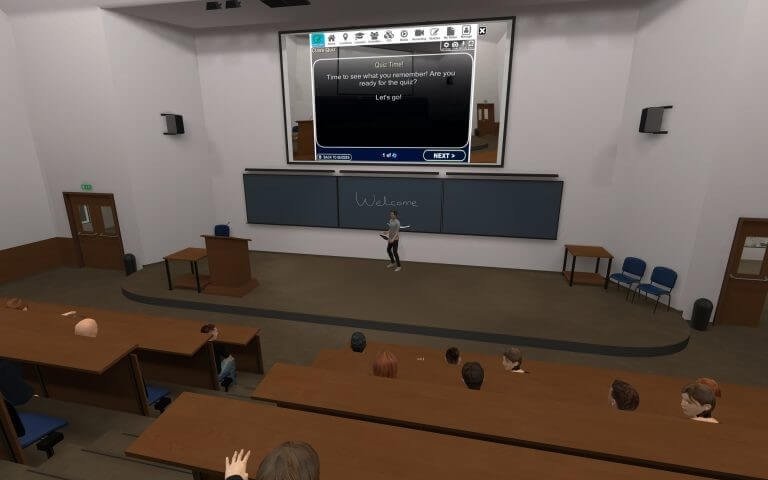Comments
- No comments found

With the world in the current state that it is in with the COVID-19 pandemic, there’s never been a better time to look to utilizing technology to increase organizational effectiveness.
With so much uncertainty in the world right now, it makes a lot more sense for brands to start using virtual reality for remote training. Sure there is the current status quo way of conducting remote work, using things like Microsoft Teams, Google Hangouts, or even Zoom meetings. But we all know the effectiveness of these platforms is limited and can sometimes cause miscommunications.
Many times internally here at VR Vision, we’ve had meetings drop, connectivity issues, and trouble conducting live demonstrations of our products. Back two years ago many predicted that we would have virtual reality in the workplace and that “virtual meetings” would be the next thing. Here we are today in one of the deadliest epidemics to ever grace our planet, and yet where are the VR meetings?
As businesses look to go remote over the course of the next few weeks (or months?), can virtual reality be used in an effective way to conduct business? Collaborative white-boards and virtual conference rooms, all with customized avatars of users connected, seem like a good idea no? Yes and no. While the problem herein lies within the adoption of the technology. Not all brands have adopted VR, and not every company has disposable Oculus Quests for their employees to take home. Then comes the problem of programming; you would need some kind of virtual environment platform to host the meetings.
Currently, there are two candidates for virtual collaboration in VR. Engage and Glue. Both have their benefits and drawbacks and I’ll look at the features of each below.
Engage is fully encompassing training and education platforms in virtual reality. It allows educators to host meetings, presentations, classes and events with people anywhere in the world. Engage allows for up to 50 remote users to be connected in their environments at the same time and has over 20 virtual locations that are unique environments for hosting your next town hall.
The platform offers over 1200 3D objects that you can utilize in their environments as well as a media streaming component that will allow users to share all types of media — from 360 videos to integrated web browsing and desktop sharing. They offer a recorder feature to create content presentation style, as well as quizzes and forms that can be interactive with users on the platform.
Glue, on the other hand, is a collaboration platform that has a much higher quality graphic aesthetic. They feature a toolkit that enables 3D avatars, spatial audio and unique spaces built to enhance collaborative meetings and allow for teams to brainstorm, co-create, annotate, take notes and facilitate meetings all within virtual spaces. There are additional tools like whiteboards, post-it notes, 3D model importing and freehand 3D drawing all to allow for virtual team building.
But what if I want to have a remote training solution for enhancing process training?
With modern standalone headsets, you are now able to use them to create real-world replicated environments that can be used for remote worker training. This can allow companies to upskill their employees remotely so that when they are back in their work environments they are better prepared and educated.
The only thing is that since we are still in the relevant infancy for virtual reality, a lot of these process-based training applications haven’t been built yet. This is where companies can look to create custom training content for their company needs and host those applications in a virtual platform to allow for remote worker training.
On the other side of the coin is augmented reality, and while not much currently exists for users to put on a Hololens and interact remotely, there is one player in the space offering a wearable AR solution.
Spatial AR allows brands to collaborate anywhere using the power of the Hololens. Spatial allows users to transport your presence anywhere (albeit on a smaller form factor) so that you can meet with anyone anywhere in the world as if you were in the same room with them. Spatial is built for the Hololens, but will work on a PC, Phone, VR headset or even a Magic Leap (are they still in business?)
These platforms are more for collaboration but can still be used for educating and training if used properly. Many times these platforms will work to provide a unique and immersive remote collaboration solution. What these platforms don’t provide are custom bespoke training solutions and that’s where VR Vision can complement these offerings. We develop custom training solutions that can be integrated into any platform and allow scalability and remote collaboration — while also offering a custom learning environment.
To learn more about how VR Vision can help make your brand more immersive and enhance your remote training with VR or AR tech, get in touch with us today!
Leave your comments
Post comment as a guest